Yes, your SINGER® FUTURA™ sewing and embroidery machine uses a plastic class 15J bobbin. You can purchase this bobbin through your local SINGER® retailer. Never use pre-wound bobbins in your machine. When using the sewing side of the machine, you can use regular all-purpose thread in the bobbin, but when using the embroidery side, you will need to use what is called "bobbinfil". This is a finer weight thread that is ideal for embroidery. There are brands that are better than others; we recommend a spun poly bobbinfil sold under the Robison-Anton or Sulky brand name.
Accessory Use
Most importantly, it is absolutely necessary that you use only SINGER® branded needles. Other brands can eventually damage the hook and the machine will require servicing. You can use a 2000 or 2020 for natural or woven fabrics and 2001 or 2045 for knits and other synthetics.
Embroidery Designs
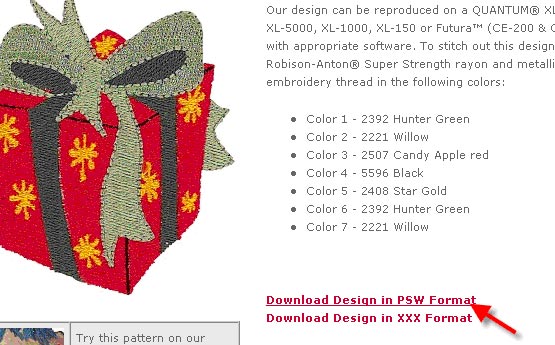
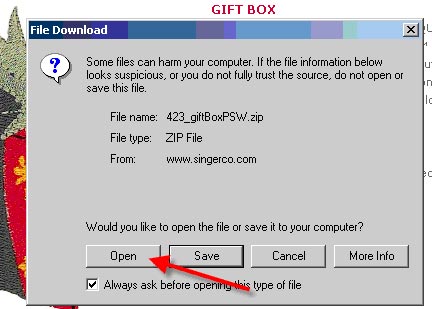
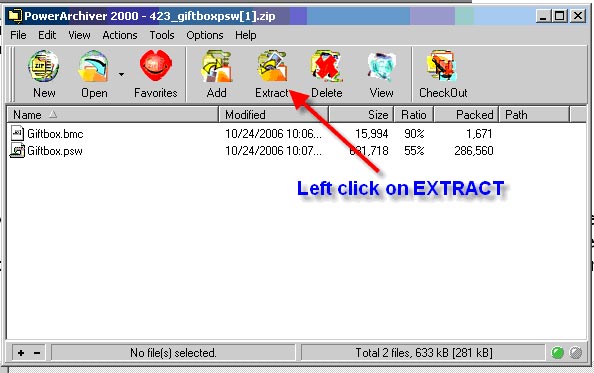
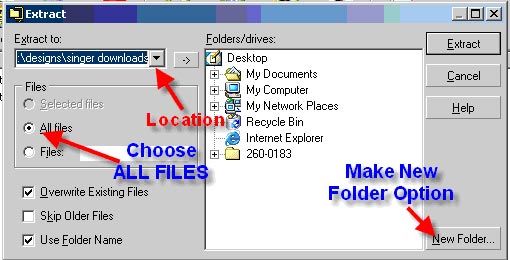
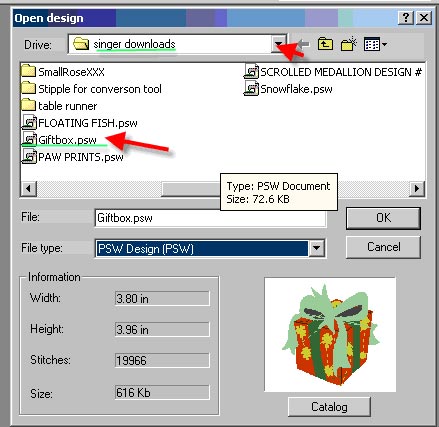
The file may not have been unzipped.
See the other FAQ on "How do I unzip a file that I have downloaded"?
1. From the toolbar left click on file, and then from the drop-down menu select "Save Design As".
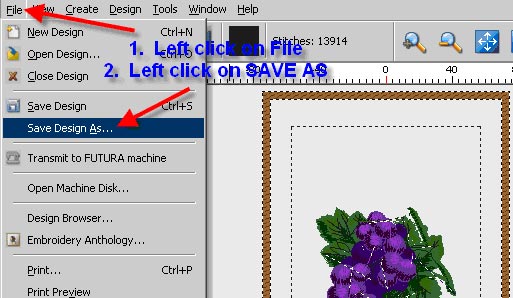
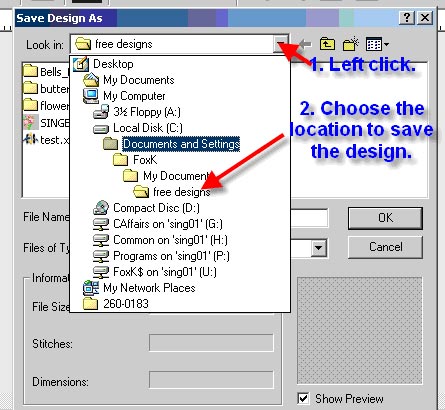
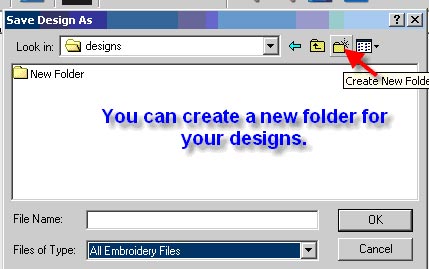
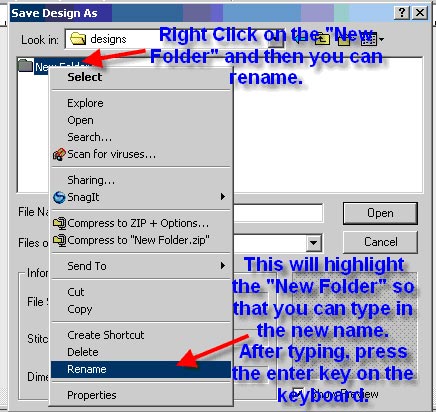
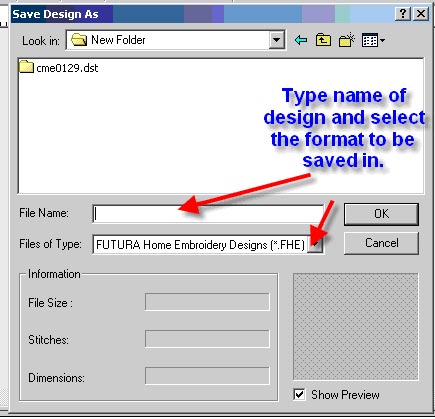
Embroidery Use
You can easily resume where you were stitching if you follow these steps. Before shutting down the machine, be sure to save the design that you were working on. This is important if you can change the size or the position of the design. Take note of which color block that you were working on. Now, you are ready to exit the navigator and shut down the program and the machine. You can remove the hoop from the embroidery unit if you need to, but DO NOT remove the fabric from the hoop. To resume embroidering, turn on the machine, open the program and reattach the hoop if you removed it. Send the design to the machine. Use the double arrow box to the right of the send block box to advance to the color that you were sewing out when you turned off the machine. If you had already started embroidering that color, use the needle up/down touch to move the needle to a few stitches ahead of the place where it last stitched. Thread the machine and start embroidering.
1. Replace the embroidery thread on your spool pin with Bobbinfil thread, wind the thread around the thread guide located over the transparent threading path on the top of your machine and then slip the end of the thread through the opening in the bobbin from the inside to the outside.
1. You can sort the color blocks together in the Object List. Left click on the color block you wish to move and then right click. In the Pop-Up menu you can type-in the new location number.
2. Select Reorder in the Pop-Up menu. Then left click on “To Position”. Type in the new sewing order.

3. Repeat until you have grouped all the same colors together.
4. Another method is to simply drag to the desired sewing order.
Click and Drag Method.


The following steps must be followed for proper start-up. If these steps are not followed precisely, you will get a “Transmission Pending” error message.
On the front of the machine, just above the "Start" button (red/green light) is the "Return Arrow" button. In embroidery mode, this will back up stitches while depressed.
The "Needle Down" button (sewing mode) will forward a stitch at a time when depressed.
1. In order to wind a bobbin you must transmit a design to the machine, as well as send a block to your sewing machine.
Embroidery Use- Hoop
See PDF for instructions on how to Multi-hoop on your SINGER® FUTURA™sewing & embroidery machine.
Machine Use
The following illustrates how to sew a 1-step Buttonhole:

You must use bobbin part number 085128. This bobbin is specifically designed for the SINGER Futura . Do not use standard class 15 bobbins. Do not use metal bobbins. Pre-wound bobbins are not recommended, as they cause tension problems and will result in poor quality embroidery.
Software Installation
Installing the software for your SINGER FUTURA machine is detailed in your Instruction Manual. For your convenience, click here to download that section.
Software Use
You can view or print a copy of the instruction manual on how to use the software. To view the manual, open the software. From the top tool bar, click on "Help" and then select "Open the Manual". To print the manual, place the program CD into the tray of the CD drive of your computer. If the Install Wizard begins, CANCEL the installation. Double click on 'My Computer" and you should see a drive with the FUTURA program identified. Double left click on that drive and then double left click on the "Manual" file. From there, choose the language that you need. From the file menu, choose the "Print" option. (For older computers, it may be necessary for you to "explore" the drive in order to access the manual).
Your SINGER FUTURA sewing and embroidery machine has excellent "how-to" tutorials built into the software. To access these tutorials, open the software, from the top tool bar, click on "Help" and then select "How-to Tutorial". These tutorials include step-by-step instructions on how to open a design, how to change stitch colors and many more topics.
SINGER® FUTURA™ machines report the hoop attached to the computer only one time, when the SINGER® Futura™ program is started. If there is no hoop attached the program will assume that the large hoop is mounted. So, if a user decides to use a different hoop than the one the machine has detected, it is necessary to change the program's setting before embroidering (see below procedure, Step 4). However, there is a correct procedure/sequence to set up the SINGER® Futura™ machines for embroidery. Preparing to embroider out of sequence will cause the computer to display an Error Message if the small hoop is used: The proper way to set up for embroidery on the SINGER® Futura™ machines is as follows:
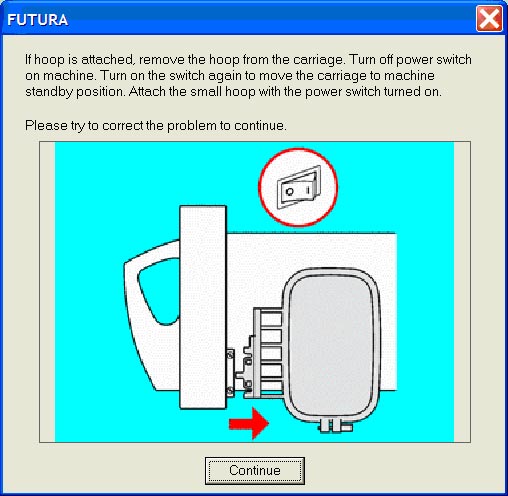
This will usually result when you are in the Text portion of your software. Simply left click on the "T" to return to the main program and all of the tools should now be accessible.
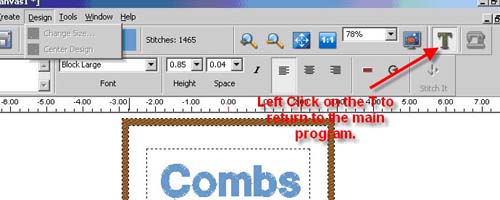
1. Place the Stock Design CD in the tray. You will see a Start Up Screen. Please close this screen.
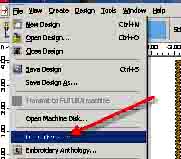
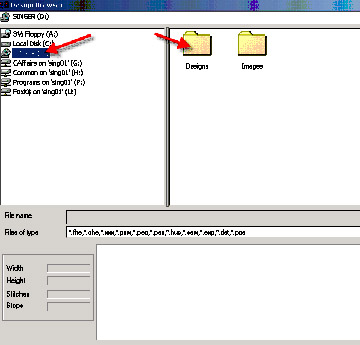
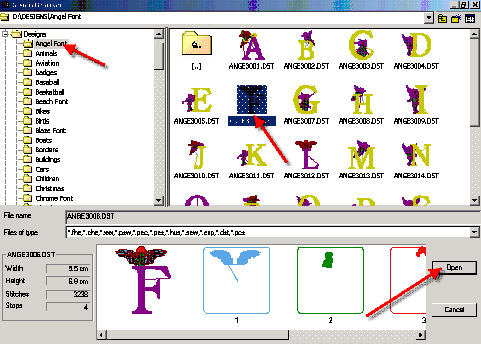
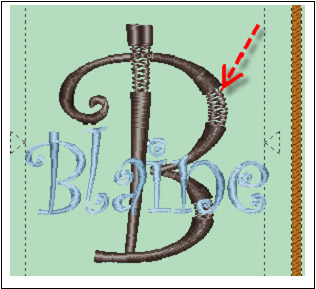
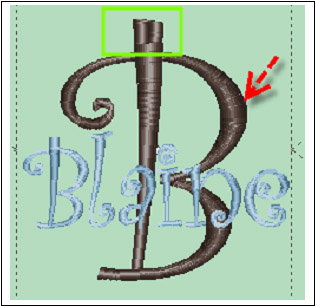

1. Type in the desired text in the lettering portion of your software. You can also use this technique with the HyperFont lettering software.
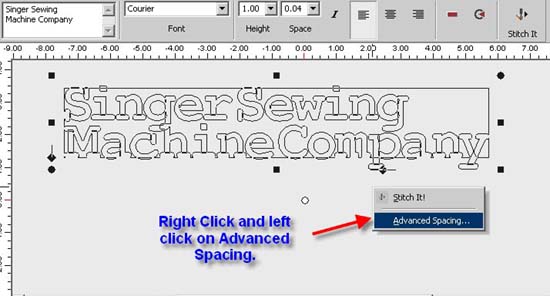
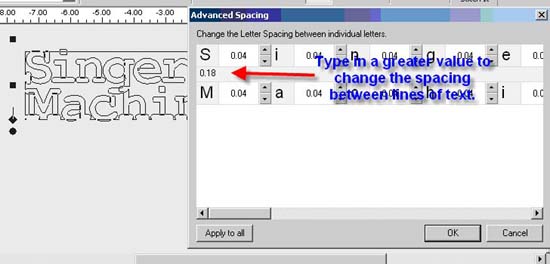
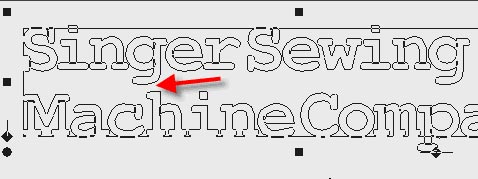
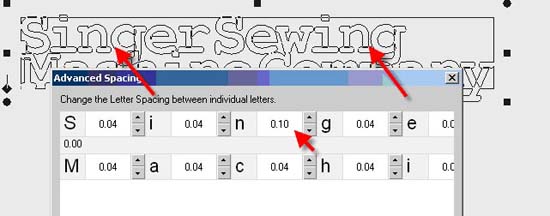
1. To view designs from a Stock Design CD, place the CD in the CD tray and use the design browser.

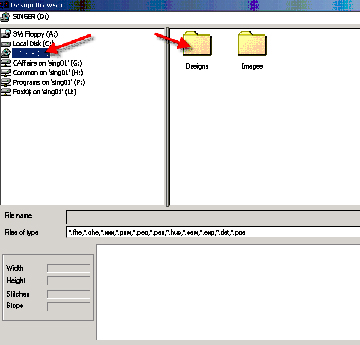
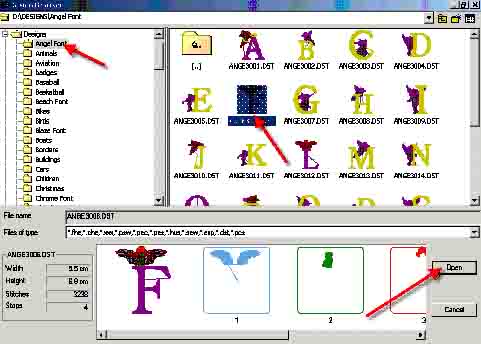
Click on "Tools" on your toolbar. Click on "System Parameters" Under Unit System you have the option to select the Metric or English system.

To insert a stop, just left click on the color block on the Horizontal tool bar before adding the lettering.

It is possible to merge color blocks or take out a stop between colors. These colors will need to be the exact same color in order to merge.
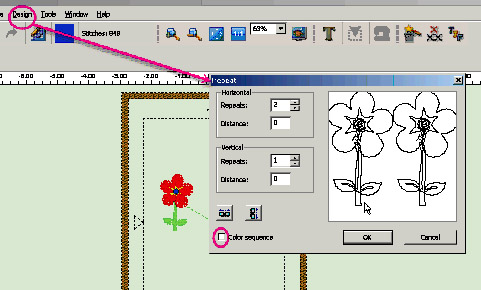


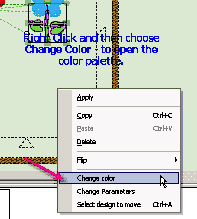
Whether using HyperFont software or your choice of the two built-in fonts, you can create a monogram in the software for the SINGER FUTURA. This can be either 2 or 3 letters. Apply the stitches. Next de-select the Text tool to return to the main screen. Now add your grid lines by left clicking on VIEW on the horizontal tool bar and select Show Grid:
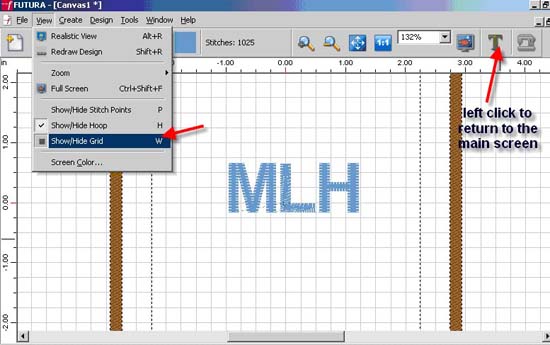
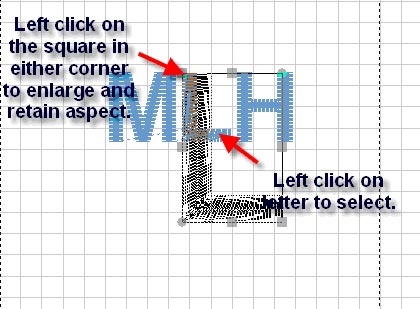
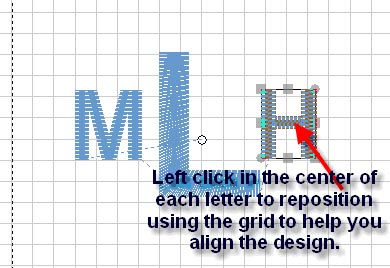
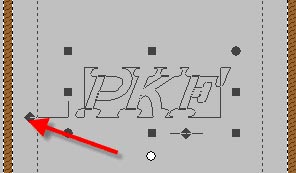
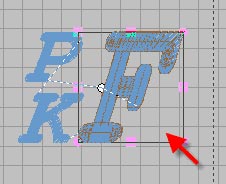
Please install the newest update VERSION 4.0.0.5 FOR ALL OPERATING SYSTEMS ( Windows XP, Windows Vista, Windows 7). This will correct the problem. The update can be found by selecting your Machine Model and then clicking Software Updates.
Software Use (Designs)
1. Pull up the design and center in the hoop on screen. Left click on the lettering tool. In the text box type a period. Insert a color change by left clicking on the color box on the horizontal tool bar; choose another color from the palette. Now move the text box off the design toward the top of the hoop. Left click on “Stitch It.”
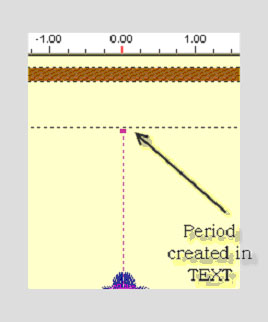

Use the "DESIGN BROWSER" located under FILE on the horizontal tool bar.
Not only can you view the design, but also when you select it you can see the color blocks, size and stitch count.

FHE, CHE, XXX, PSW, PEC, PES, HUS, SEW, EXP, DST, AND PCS.

1. When importing a design from an outside source, the designs can be resized using the Change Size dialog box.
2. To change the design proportionately, first click a ‘check’ in the box above the Padlock icon. This will convert the dimensions from working in actual measurements, to working in percentages.
3. Simply type in the amount of change in either the X or Y dimension box. Click OK, and the design will change size and will recalculate the density.
4. When clicking and dragging around an imported design to change size, it is possible to change size proportionately by clicking and dragging either the upper left or lower right corner. However, even though the design has changed size, it does not (using this method of resizing) recalculate the density.
5. When using designs from the SINGER Futura™ Library, it is possible to resize in either method above, and the design density will recalculate.
When sizing designs in the software for the SINGER FUTURA you can resize designs from the Library in the hoop on screen and keep the design integrity.
All other formats should be changed in the DESIGN/CHANGE SIZE menu in order to change the stitch count.

In the software for the SINGER FUTURA it will recalculate the stitch of an imported design when sizing, but only when using the DESIGN>CHANGE SIZE option. It does have a limitation of re-sizing up to 149% and down sizing to 51% and while still being able to re-calculate the stitches correctly
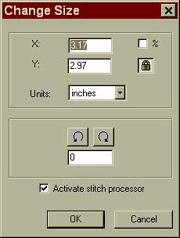
1. Click on “Create” on the top tool bar.
You cannot import more than one design into the hoop unless it is from the Built-in Library designs. It is possible to add a Library design or Lettering to a pre-digitized design during layout.
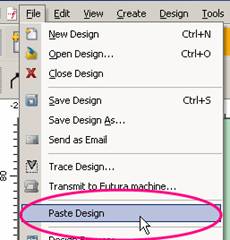
1. Select "Show/Hide Grid". On the top tool bar click on 1.1 Open design 2 (B).
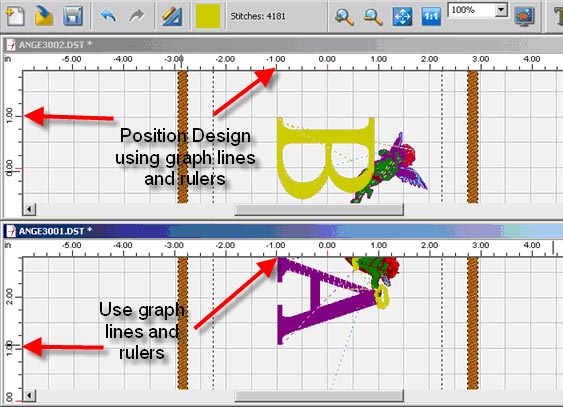
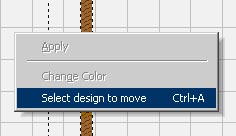
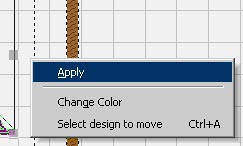

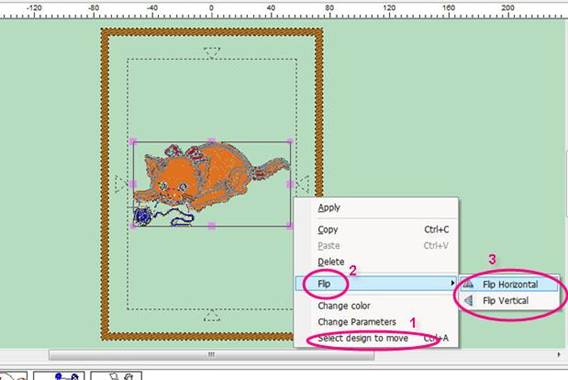
Software Use (Lettering)
The density is set to a standard value of 4/10th of mm, which is usually the standard density used for Lettering.
The value is not editable.
To add density to built-in lettering use the following directions. This process will work both with the built-in fonts and the ones created using Hyperfont.
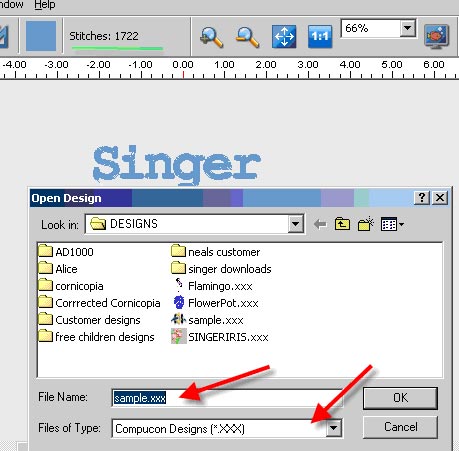
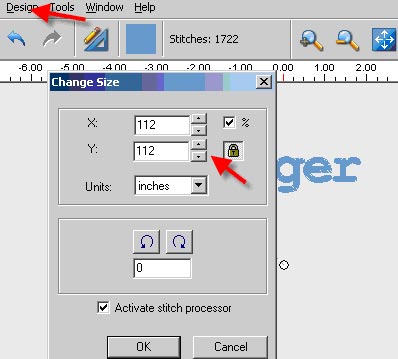
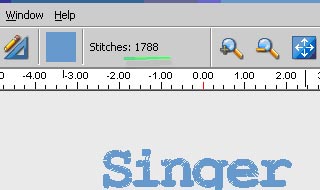
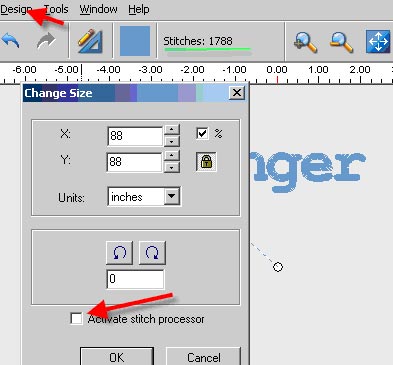
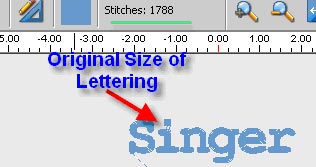
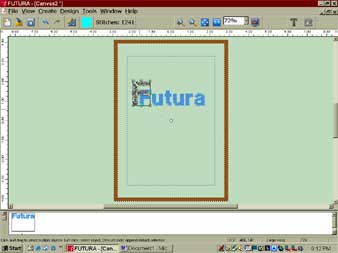
Software Use- Auto CrossStitch™
To load base software and AutoCross Stitch 1.0.0.1 (If you have other options programs such as AutoPunch, HyperFont etc, load those first before loading AutoCross Stitch)
Software Use- AutoPunch™
AutoPunch™ will read imported clipart files. It will not in most instances do an adequate job of digitizing lettering created in Word. If you save it in a high resolution and size up the design before you try to digitize it you can have better results.
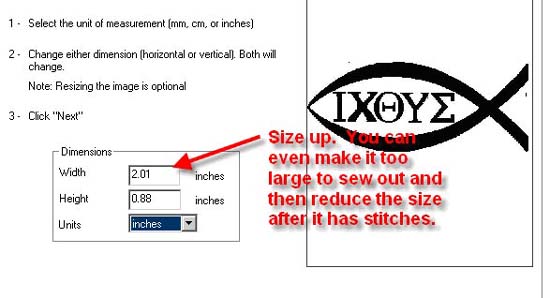
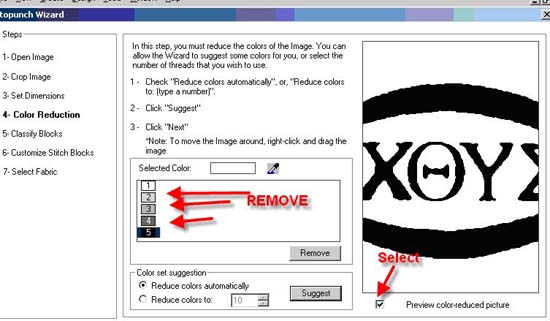
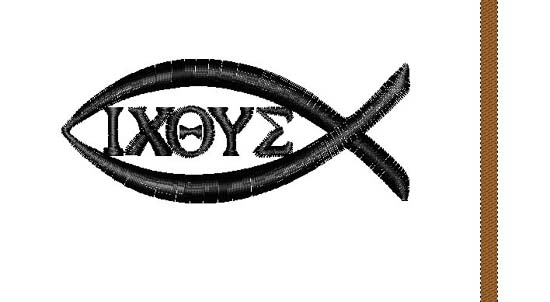
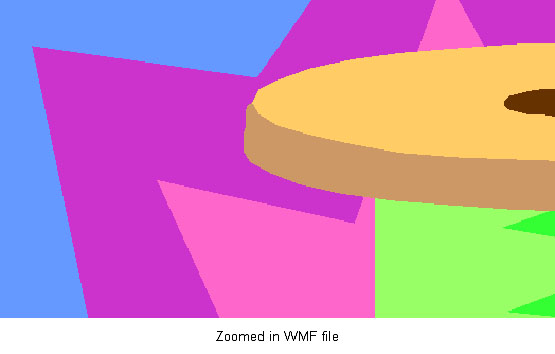
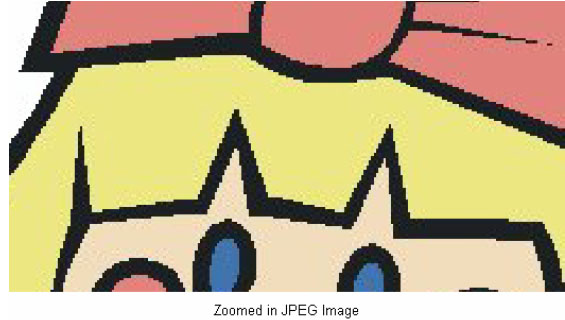
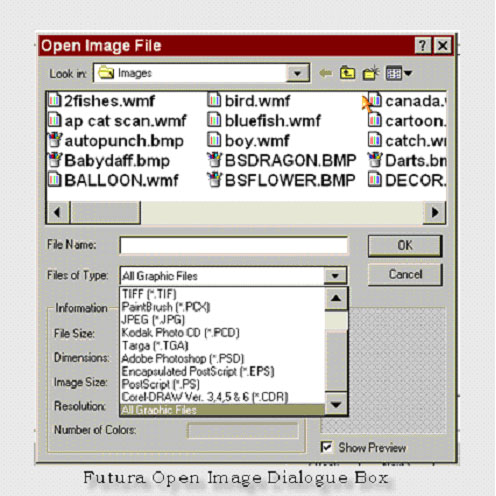
Color Reduction cleans up and simplifies an image by reducing the number of colors in an image. You can either allow the program to decide the colors or manually select the colors.

AutoPunch™ is not suitable for the creation of lettering. It is unable to read the data in order to process it correctly. Even if you created the letters in graphics software and brought them into the SINGER Futura™ program, the AutoPunch™ is unable create a satisfactory result.
There is an optional program called HyperFont™ that will automatically digitize any built-in TrueType fonts from your computer. This program is available through your local SINGER Retailer.
AutoPunch™ is not suitable for digitizing TrueType Fonts. There is however an optional program that you may purchase called HyperFont™. This software is designed specifically to digitize the TrueType fonts that are available on your computer.
Visit your local SINGER Retailer for details.
While the software will read various formats, not all images are suitable for AutoPunch.™ AutoPunch™ digitizes by color change. Clear, simple images will give the best results. AutoPunch™ is not suitable for use with photos. The PhotoStitch™ software has the ability to change photos into embroidery designs.
This program is available through your local SINGER Retailer.
There is a very informative manual located on the AutoPunch™ CD.
To access the manual return the CD to the drive and go into Window Explore and find the AutoPunch™ CD. You will find a file named “Manual,” just double left click on the icon and it will open the .PDF file OR access if here:
Software Use- HyperFont™
To load base software 1.0.0.1 with AutoPunch 1.0.0.1 with Hyperfont 1.0.0.2 or Photo Stitch 1.0.0.2
See this PDF for how to "Create Hyperfont Text" in the SINGER Futura Sewing & Embroidery Machine.
Software Use- PhotoStitch™
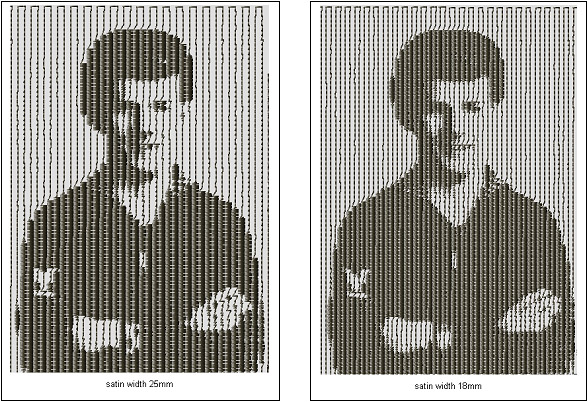
To load base software 1.0.0.1 with AutoPunch 1.0.0.1 with Hyperfont 1.0.0.2 or Photo Stitch 1.0.0.2
Software Use-Editing
1. Open the design. Then on the top tool bar choose Design ->Change Size.
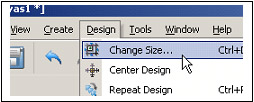
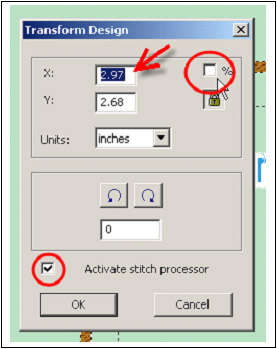
1. Close program and then turn off machine.
2. Place Advanced Editing CD in tray and follow installation instructions.
3. Turn on the SINGER FUTURA machine and double left click on FUTURA icon to open program.
4. The Advanced Editing will become part of the FUTURA program and will appear as an icon on the tool bar when you open the program.
1. When working with an imported file type you will need to Convert Stitches to Block in order to change the Embroidery Settings.
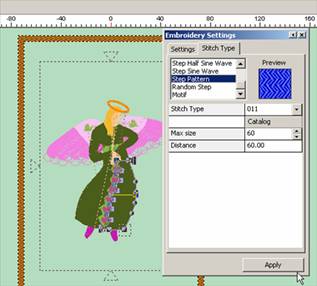
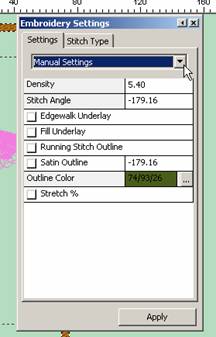
Thread Break
If you need to back up within a design, simply touch the backstitch icon on the front of your machine.
All of the Error Messages signify that the upper tension path is not threaded correctly. Check that the transparent thread path located at the top of the machine is threaded correctly.
Hold thread in both hands and slip under transparent thread guide. While holding the thread securely, pull the thread towards you and then slip it back and forth like you were flossing. You should hear or feel two clicks as the thread slips past the thread guides.
See the diagram below:

